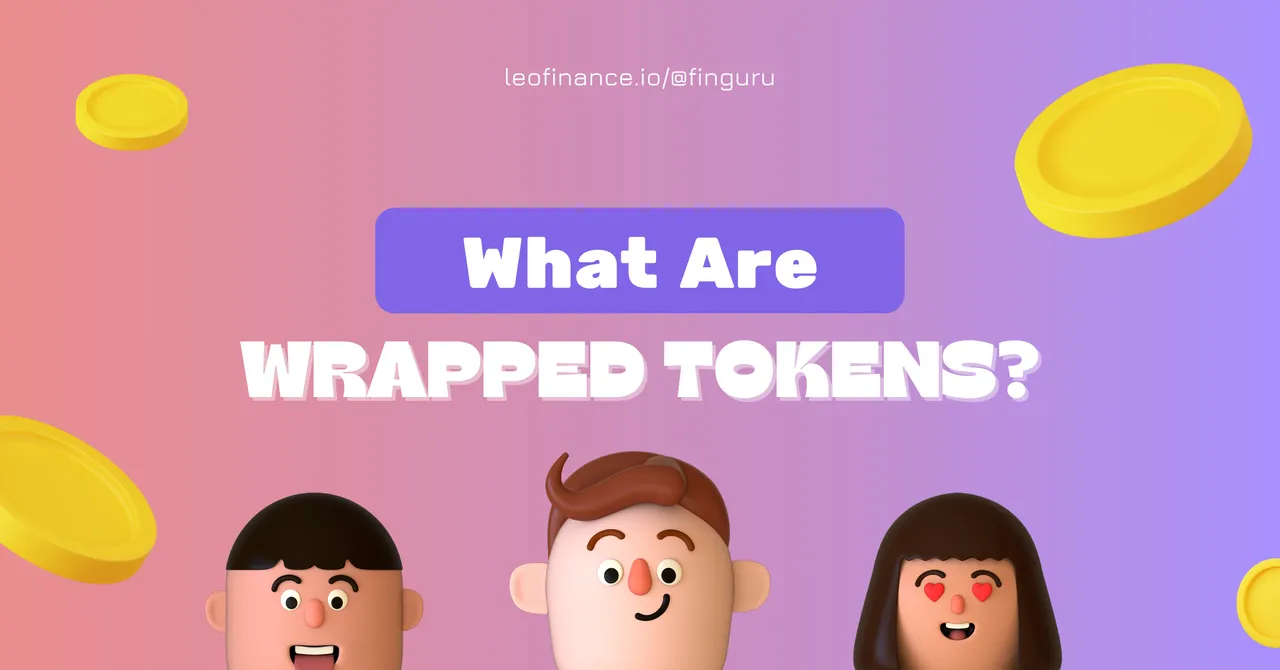
Most blockchain platforms are not interoperable by default. They run their own set of rules that do not allow them to freely interact with other chains. Wrapped tokens are crypto tokens that are backed by the value of another cryptocurrency on a different network. They allow users to hold and use a token with a stable price, while still using the underlying technology of their choice. In this article, I'll explain what wrapped tokens are, how they work, and why you may want to use them.
What Are Wrapped Tokens?
Wrapped tokens are a way to represent a cryptocurrency. It can be said that this type of cryptocurrency is “wrapped” around the native asset, making it accessible for trading on exchanges or decentralized exchanges (DEXs). They can also be called “smart tokens” as anyone can create them and use them however they want to. For example, you could have a wrapped token that represents Bitcoin and use it for your transactions on Ethereum Blockchain. DeFi options are unavailable on Bitcoin so wrapping can allow users to earn a yield on their BTC on other networks which are cheaper, much faster, and more advanced. Another similar example would be wrapping HIVE & HBD via Multi Token Bridge into bHIVE & bHBD. It allows users to invest their Hive assets into Hive Pools on Cub Finance powered by Binance Smart Chain (BSC).
Another common use case for wrapped tokens is trading on or over-the-counter (OTC). This means that these types of cryptocurrencies can be traded directly between two parties without having to go through an intermediary such as Binance, Coinbase Pro or OKEx. If you were looking at buying some bitcoin but didn't want any KYC requirements attached, you might consider doing so through an OTC platform like LocalBitcoins instead of going through one of these larger exchanges first - this would allow you to avoid some of those fees while still getting what you wanted!
Difference Between Wrapped And Native Cryptocurrencies?
Native cryptocurrencies, such as Bitcoin and Ethereum, are not tied to any other asset. Wrapped tokens, on the other hand, are tied to another asset.
For example, WBTC is a wrapped version of BTC on Ethereum or any other blockchain that tracks its price with 1:1 ratio and can be redeemed for actual BTC on Bitcoin Network.
How Do Wrapped Tokens Work?
Wrapped tokens are an innovative solution that allows you to trade your cryptocurrency seamlessly over networks. This can be done through the use of a digital wallet, which is similar in functionality to an exchange account.
They work by allowing users to convert their existing cryptocurrency balances into “wrapped” equivalents. End user doesn't bother what's happening technically in the background. They can put their tokens via a wrapping mechanism. Once this conversion has been completed, users then have access to crypto/tokens that represent their original cryptocurrencies at whatever rate was agreed upon between them and the platform they are using for the transaction.
Why Create A Wrapped Token?
You may want to create a wrapped token if you're aiming to achieve any of the following:
Back your token with a real-world asset. If you need your token to be backed by an asset, such as gold or oil, this will give it more value.
Peg your token to another cryptocurrency. For example, if you think that the price of Bitcoin will rise over time and would like to create a token based on its value but don't want it exposed directly to volatility in Bitcoin prices, you could peg it instead against something else like Tether (USDT). This way if BTC rises against USDT then so does your new token; similarly if BTC falls against USDT then so does your new wrapped version which has been pegged at 1:1 value holding onto its underlying value while also avoiding any risk associated with having full exposure to Bitcoin's price fluctuations.
Peg your token against fiat currency values such as dollars or euros or pounds sterling etc... just like above except instead of pegging against other crypto assets we're pegging them against fiat currencies instead!
Advantages of Wrapped Tokens
- Wrapped Tokens bridge the gap among networks.
- They can solve the liquidity problem.
- You can use wrapped tokens to explore DeFi opportunities and earn yield.
- They can be used as a medium of exchange, like traditional currencies without the need for an intermediary.
- Their value is backed by the assets held in the reserve account and not just speculation about their worth in the future (like most cryptocurrencies). This means that they're more stable than most cryptocurrencies on a day-to-day basis, making them more suitable for some types of transactions than others (e.g., long-term storage rather than frequent purchases).
Disadvantage of Wrapped Tokens
One of the major concerns of wrapped tokens is the security of the original crypto assets. They are locked in a smart contract once wrapping is done so that they can be redeemed later. While they are locked, hacks can lead to loss of funds. Wrapped tokens are created and destroyed by the issuing party, therefore creating a level of centralization in most cases.
Conclusion
Wrapped tokens are a way to invest in cryptocurrencies without having to own them. It’s also a good way for companies to raise money and issue their own tokens, but it does have some disadvantages as well. It’s important to understand how wrapped cryptos work before investing any money into them because they can be risky if you don't know what you're doing!